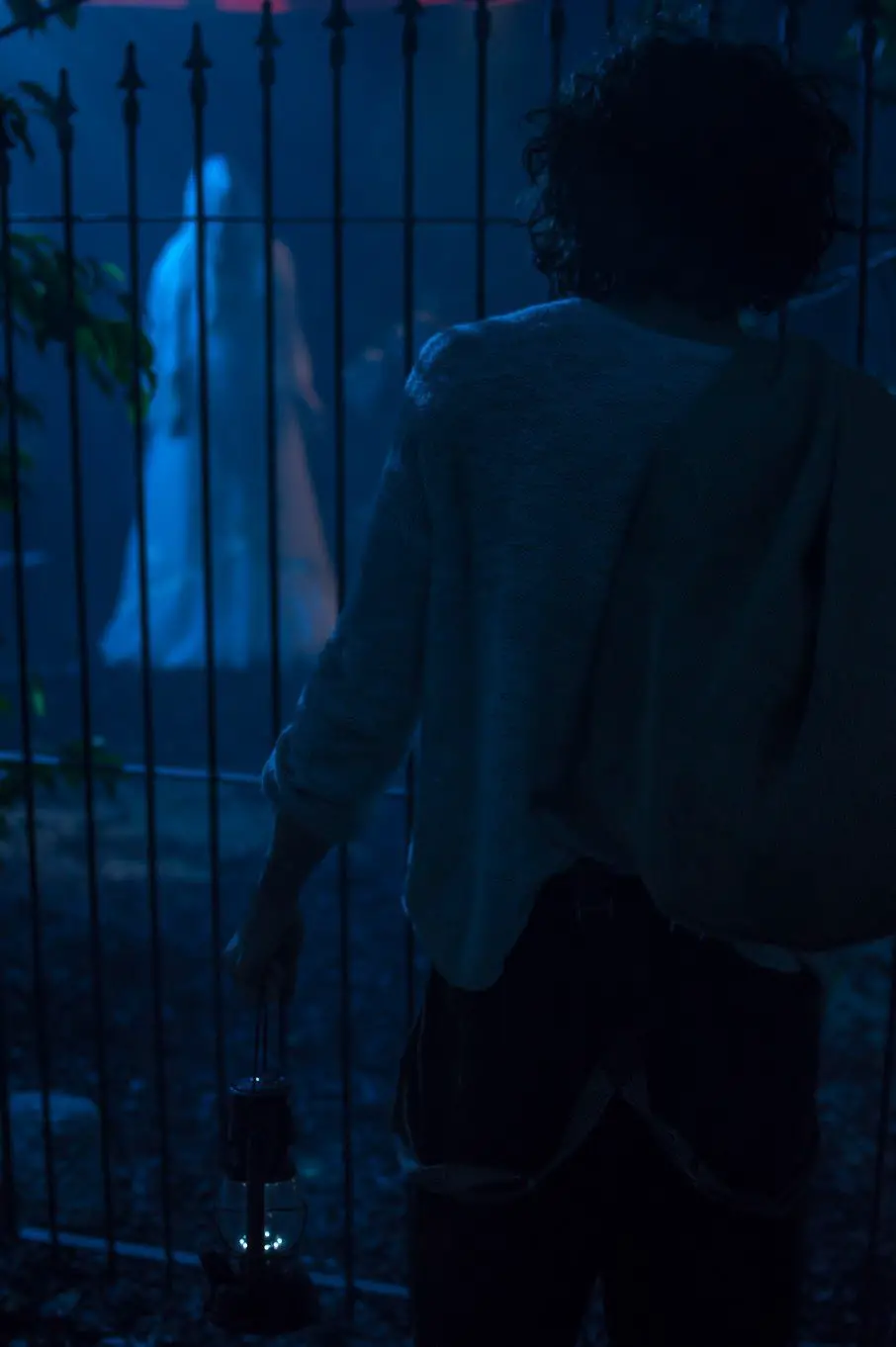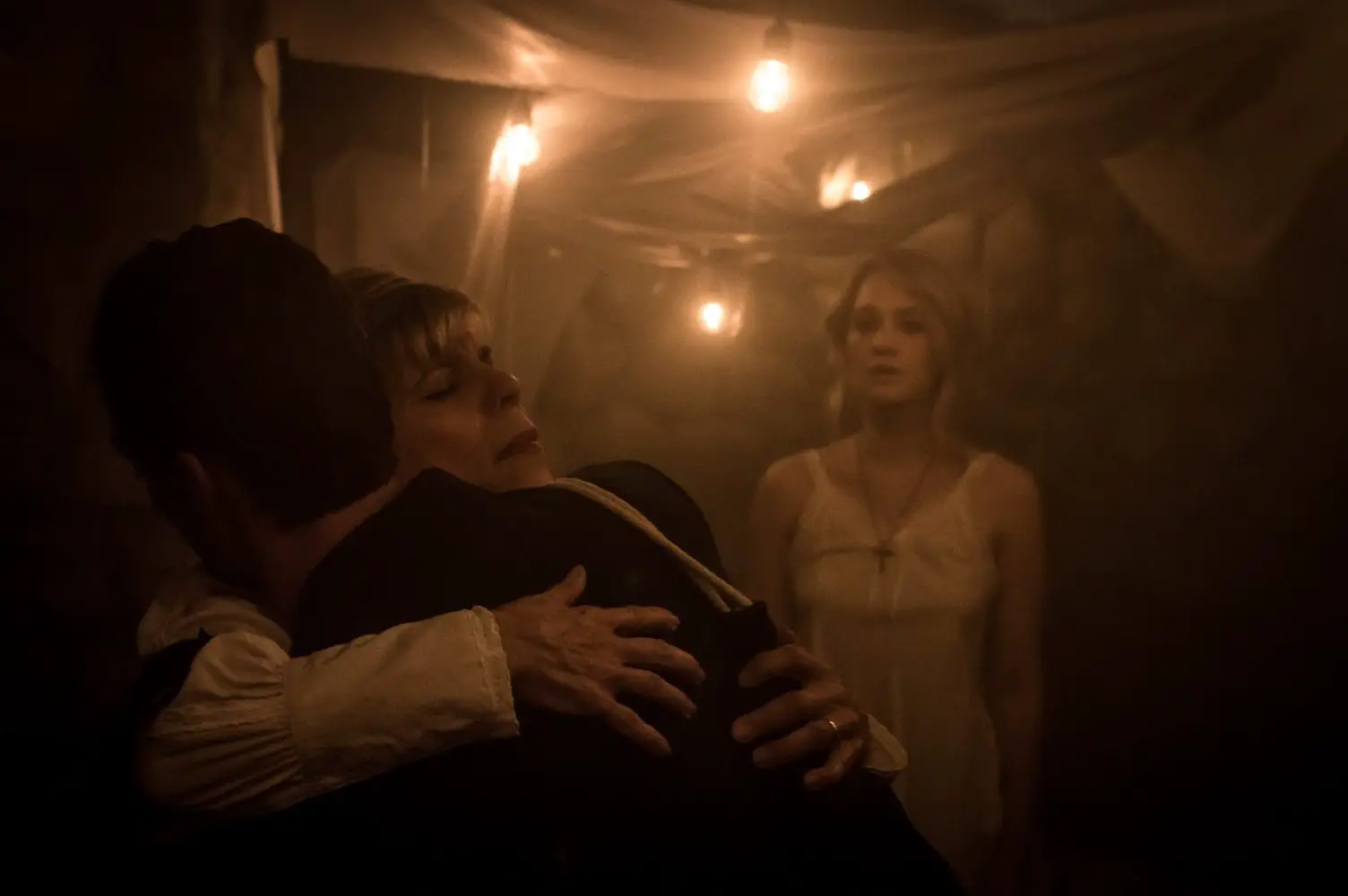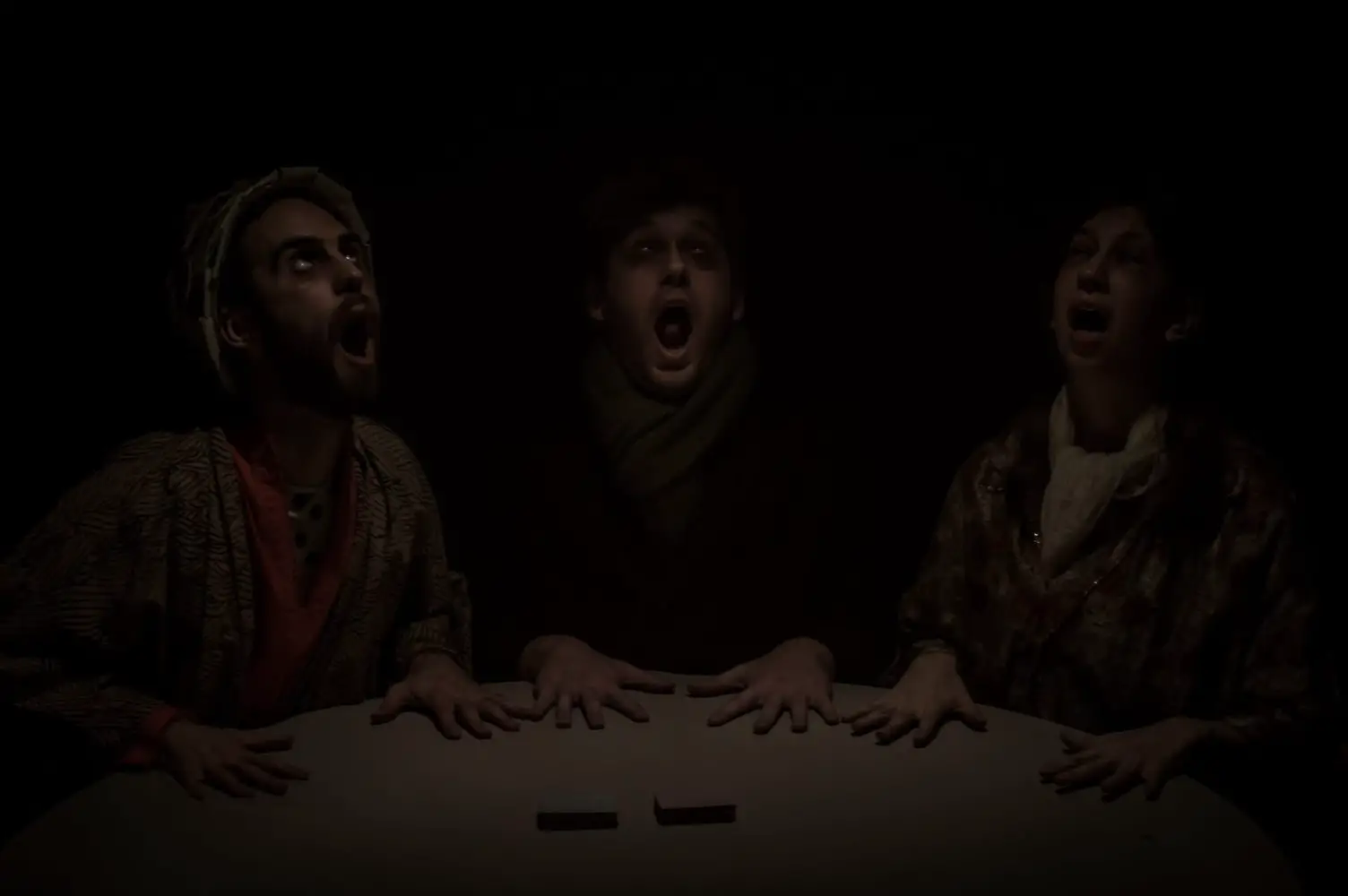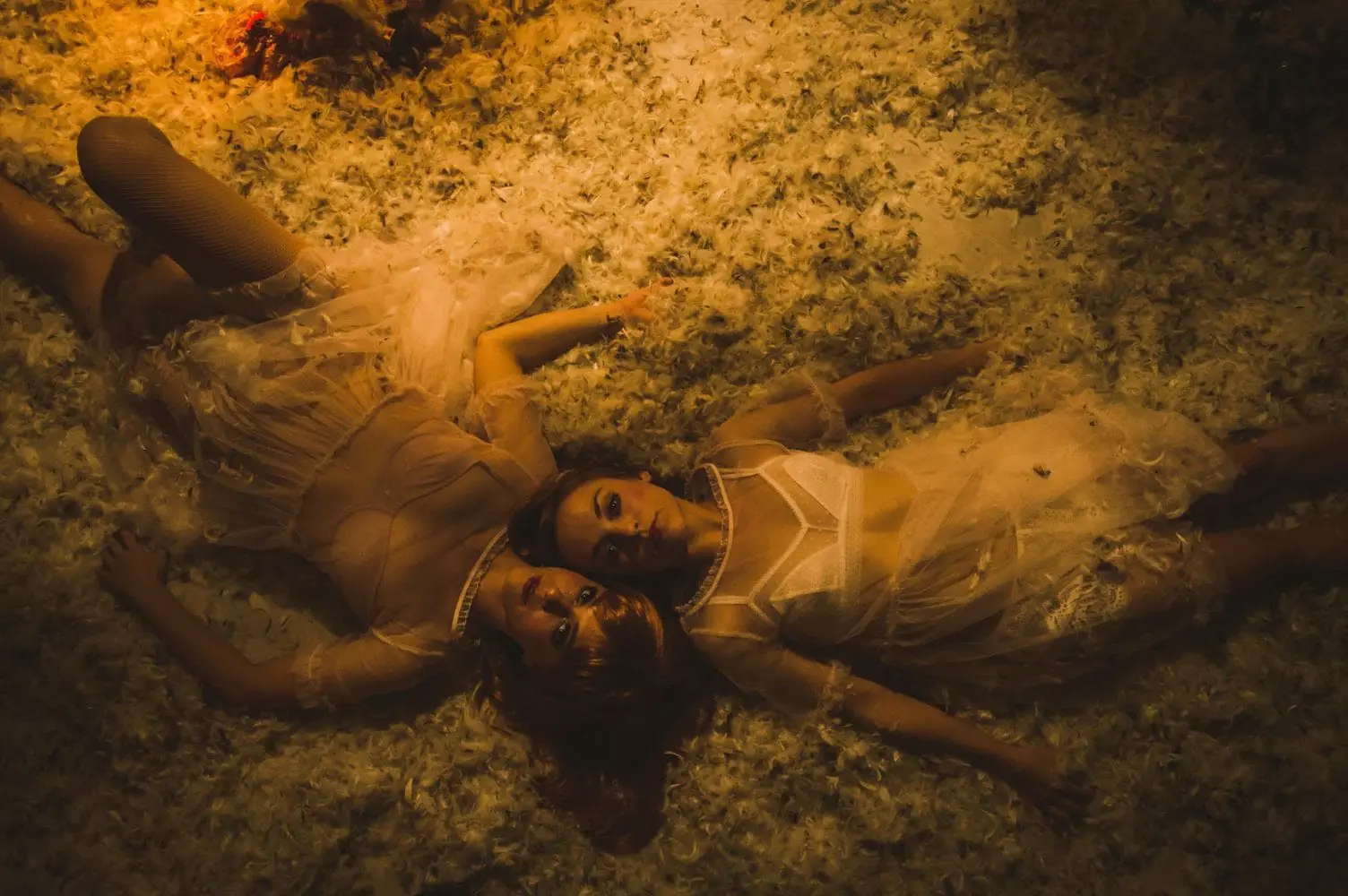Lore begins with an epigraph, delivered to the audience in a pitch black room: “We tell ourselves stories in order to live.”
This famous line, borrowed from Joan Didion’s groundbreaking essay “The White Album” and delivered via prerecorded voiceover, serves as a potent thesis statement for that which awaits the audience for the next 60 minutes or so. And though Didion’s meditation, as it appears in the show, stops short after its famous opening line, continuing further into the passage as it was originally written provides an insight that is curiously even more resonant. She continues: “We look for the sermon in the suicide, for the social or moral lesson in the murder of five. We interpret what we see, select the most workable of the multiple choices. We live entirely, especially if we are writers, by the imposition of a narrative line upon disparate images, by the ‘ideas’ with which we have learned to freeze the shifting phantasmagoria which is our actual experience.”
The latest shifting phantasmagoria from Just Fix It Productions’ CreepLA brand then is Lore, an immersive theatrical adaptation of the six-part series from Amazon Studios of the same name, which is in turn based on the iTunes chart-topping podcast created and hosted by Aaron Mahnke. If all of that strikes you as an amount of corporate synergy and cross-promotion that is at best incompatible with bold, compelling art (or at least the type of bold, compelling art that we’ve come to expect from CreepLA), the fear is understandable. Fans of Creep’s wholly original 2016 piece Entry might instinctually shudder at the thought of a corporate hand rooting around in the creative process, especially one working in service of the soulless world of advertisement and promotion.
Thankfully, Lore proves beyond a shadow of a doubt that these fears are entirely unwarranted. In fact, the marriage of elements between the Amazon series and the Creep aesthetic is so perfectly seamless and organic that I never once found myself feeling like something was being “promoted” at all. Instead, its influence manifests in the form of a series of familiar tropes and touchstones that breathe a strange, powerful, and at times darkly whimsical life into the experience. In the woods of Lore, wolves, rabbits, and fairies mingle with cursed artifacts, seances, and asylums in a way that (remarkably) manages to feel thematically coherent while still maintaining the versatile, episodic nature of a batch of bedtime and campfire stories.
The addition of the familiar folklore and mythological elements in fact presents Lore with an interesting new challenge: interpreting that which is inherently narrative through their patented lens of abstraction and dream logic. The end result is a hybrid piece which keeps the viewer on their toes for the entirety of the experience, presenting you with a grotesque dreamlike movement piece in one moment, and an altogether linear sequence of restrained domestic fabulism in the next.
Beyond the content of its vignettes, Lore also boasts some of the most impressive set design that I have encountered in recent memory. Though my affinity for the darkly whimsical may be speaking on my behalf, I was completely delighted to traverse the foggy forbidden forests and desolate graveyards that the show took me through. Taking residence in the basement floor of the The Reef (known as The Magic Box), I am inclined to say that the designers at Just Fix It Productions had an embarrassment of riches when it came to space to play in, but to say so would in actuality only be a guess. The world of Lore was so transportingly labyrinthine, by the time I had gotten about 15 minutes in I had lost all sense of my location entirely. Every set felt simultaneously light years away from and right next door to every set before it. As such, there is no doubt in my mind that Lore will greatly reward repeat viewings. The design of each scene has so many moving parts, so many forking and criss-crossing paths, that it seems impossible that one could truly begin to get the full picture without at least three or four revisits.
Of course all of this space would be wasted without actors to play in it. This, as with Entry last year, is perhaps Lore’s biggest secret weapon: the sheer volume of clever, mischievous actors that loom and (sorry) creep in every corner of this world. Even aside from the characters that take center stage in the more linear scenes, the world is consistently infested with a cast of familiar roaming background characters that bleed between realities seemingly on the most effortless whim. It is the type of cast that makes a writer almost lament its size, as each performer in this massive ensemble deserves to be praised by name.
Ultimately, Lore stands as an absolute testament to what immersive horror theater is capable of. It has the sophistication of design that can only be achieved by a major operation (with a network investor behind it of course), yet it still manages to give each audience member an experience that feels interactive, intimate, and above all individual. Audiences don’t simply observe the world of Lore, they explore it. And, as with any exploration, we are wont to find some things at the cost of missing others. When we come out the other side, we do so with a collection of artifacts, memories, images, and feelings to carry with us. The stories we decide concoct from these are our own. Whether they are “true” or not, as guests are reminded in a voice-over epilogue, is immaterial.
“Lore” runs through mid-November. To learn more about the production, visit CreepLA online here or JFI Productions here. Tickets for “Lore” can be purchased here.
Thank you to Hatbox Photography for the gorgeous photos in this article.










Fantastic read. Thanks for sharing your experience. 688!
Comments are closed.